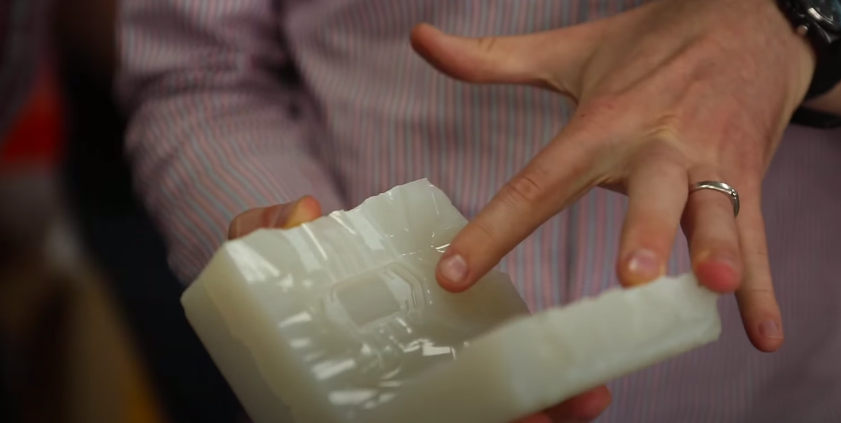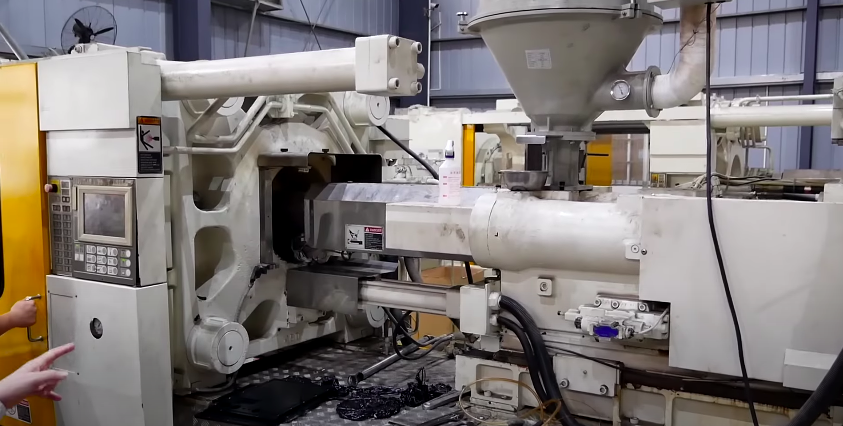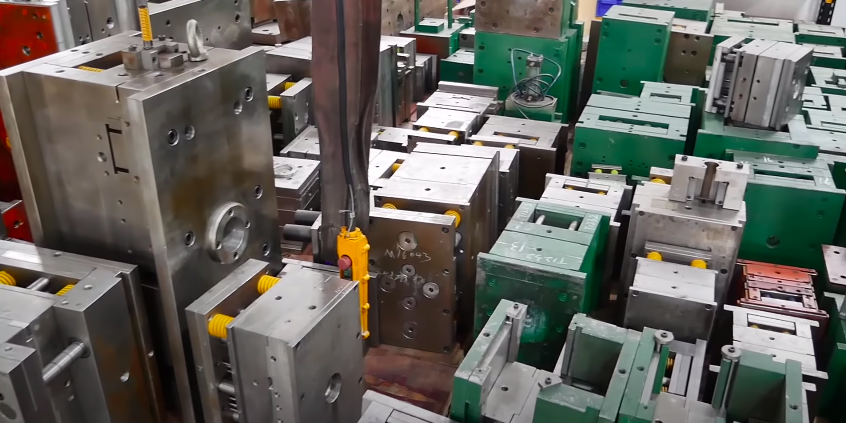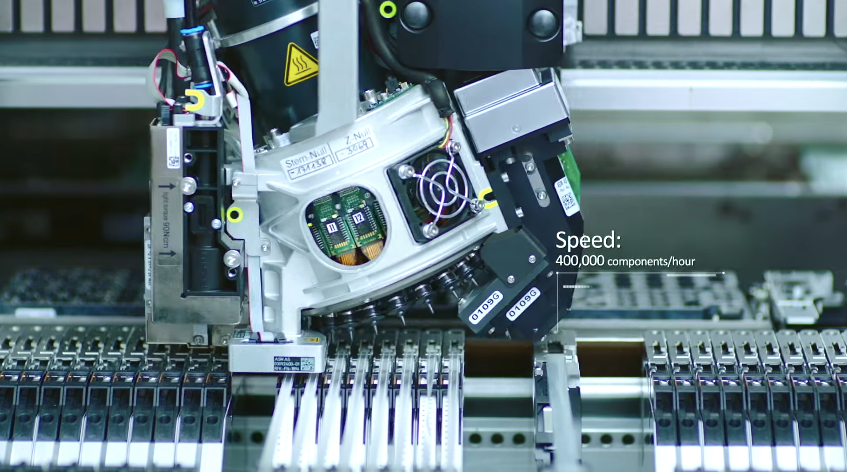Manufacturing for plastics: steel tools, silicon, and 3D moulding
- Vela Georgiev

- May 5, 2021
- 5 min read
Updated: Feb 20, 2023
Shenzhen is famed globally as the world’s leading electronics manufacturer. Electronics, however, are not the only products produced in Shenzhen. Almost all electronics require forms of casing and enclosures. Moulded plastics cover many of the electronics we use today, and these products are produced, in mass, in Shenzhen.

In 2017 HardworX led a group of engineers, entrepreneurs, and startup founders to tour Shenzhen. The aim: to demystify hardware manufacturing in China.
For the tour group, who were more familiar with electronic manufacturing, exposure to mechanical manufacturing provided a strong and refreshing contrast. The visits built on an already-growing knowledge of manufacturing in China and answered questions around cost, quality, and time-to-market. They also provided invaluable knowledge in expediting the manufacturing process and the nuances behind plastic injection moulding.
Developing mould tools
(and why they’re so expensive)
Visiting Jaifu, a factory that designs and manufactures moulds, provided an immersive experience for the group. Jaifu creates moulds, known as ‘tools’, for plastic component manufacture. The company also produces plastic housing for some of the world’s largest phone charger brands.
Tool making is complex, intricate and, in the case of steel tools, an incredibly expensive process. For the tour group seeing the process up-close was awe-inspiring. It also helped bridge the gap of understanding around costs, and lead times.
When it comes to mould tool cost and lead time, the material from which the tool is made is the key differentiator. While silicon and 3D printed moulds are quick to produce, the tools degrade quickly requiring frequent replacement. These aren’t suitable for larger-scale product runs. Hard steel moulds, on the other hand, are very durable, with millions of products being able to be produced from one mould. Hard steel tool creation, however, is tedious, intensive, and can take many days or even weeks.
Hard steel tool production involves spark erosion machines, which remove steel atoms one at a time. It can take weeks to etch out the very fine patterns required.
‘This is where we start talking about manufacturing as a craft rather than just a process’, said Sarah Last, MimicTec. ‘Some parts have to be finished off by hand, not just the machine. You have to get a rasp and smooth the part off, but just to the right degree.’
Hard steel tools, unlike silicon, or 3D printed moulds, can withstand millions of shots, meaning that for larger-scale order runs, they are more cost-effective overall. Seeing the process up close demystified the expense and time. It became clear how important the design process is and how crucial it is not to make costly mistakes. The visit helped immensely in completing the fuller picture for the group and was a useful comparison for subsequent mechanical factory tours.
To learn more watch the full tour of Jaifu.
The silicon mould trade-off
At Jaifu, upfront costs of production are high, making manufacturing cost-prohibitive for some. On the tour, the group were able to visit other factories where low volume production runs were possible.
Both HLH Prototypes and Kaier Wo focus on providing rapid prototyping, tool, and production services utilising a wide range of manufacturing processes such as 3D printing, CNC machining, vacuum casting, and injection moulding. The factories, like others in China, specialise in prototypes, making it easier and more cost-effective to produce small runs of products.
Many of the prototypes for low volume production runs are made with silicone moulds. These are inexpensive and quick to produce. They are perfect for small runs of around a dozen products. Silicone moulds are a viable option for startups and entrepreneurs to see how their product will look and function without having to pay high costs for tools. In fact, at HLH, a key selling point is that they have a minimum order for one––making them perfect for prototyping.
At Kaier Wo, the tour group also saw good examples of silicon moulding. Kaier Wo produces medical grade equipment that is expensive to produce and, therefore, has low demand. For this, the expensive process of creating steel moulds is inappropriate and silicon moulds provide a good solution.
‘Our visit to Kaier Wo showed that this type of manufacturing, with silicon moulds, was a legitimate form of manufacturing for short runs,’ said Sarah Last, Mimitec.
For the group, visiting smaller-run factories opened up possibilities––they could begin prototyping products at relatively small costs.
A range of possibilities
The value of the tour was in witnessing first hand the possibilities when it comes to manufacturing. It was also useful to compare and contrast both manufacturers and manufacturing methods. Not only was the group able to get a better understanding of the tradeoffs in different manufacturing processes, but they were also exposed to different types of tooling options
Take HLH for example, which offers rapid approaches to steel tooling. While the production of hard steel tools is costly and incredibly time-consuming, tools with softer steel are quicker and cheaper to produce. HLH produces tools made from aluminium and other types of softer steel. The obvious trade-off with softer steel tools vs hard steel tools: they wear more easily. However, for those with lower product volumes, or where design maturity has not been reached, they offer a less expensive alternative.
HLH also offers rapid tool bases––a type of tooling which uses set bases adaptable for multiple products. This means that the tool base is common and the mould insert is interchangeable. These reduce the cost of the overall tool and allow a quicker process to market. Rapid tool bases, however, can be restrictive. The tool insert requires a base and the base is owned by the factory and, as such, the mould tool can’t be transferred to another factory.
Lessons learned
The right factory will depend entirely on the company and its goals. For those who are focussed on costly goods, with low production runs, or those wishing to prototype, companies like HLH, or Kaier Wo may be the right fit. Whereas, those with high volume product demand, may find hard steel tool production to be, overall, more cost-effective at a factory like Jaifu. For those who don’t fit either of those categories, rapid tool bases, or softer steel production may provide a viable alternative.
In Shenzhen almost anything is possible and, as the tour group discovered: there is a suitable factory and solution for almost every product idea in the world.
To learn more, watch the documentary tours of both HLH and Kaier Wo.
HardworX would like to thank all those who made the tour possible, and in particular:
Karl von Möller for his passion and dedication in producing this documentary series. The entire documentary episode list can be viewed here.
All of the factories for welcoming the tour group, spending time, and sharing knowledge. To view a list of the factories visited, click here.
The HardworX Shenzhen Innovation 2017 tour group consisted of tour leader Vela Georgiev, participants Andy Gelme, Brian Gilbert, Jon Oxer, Kemal Ajay, Liam Brennan, Noor Magesh, Sarah Last, Tom Partridge, Simon Holmes a Court, Hans Chang, and Karl von Möller.
Related videos
Highlights reel from the 2018 HardworX tour to Shenzhen, plastics factory tours.




























Comments